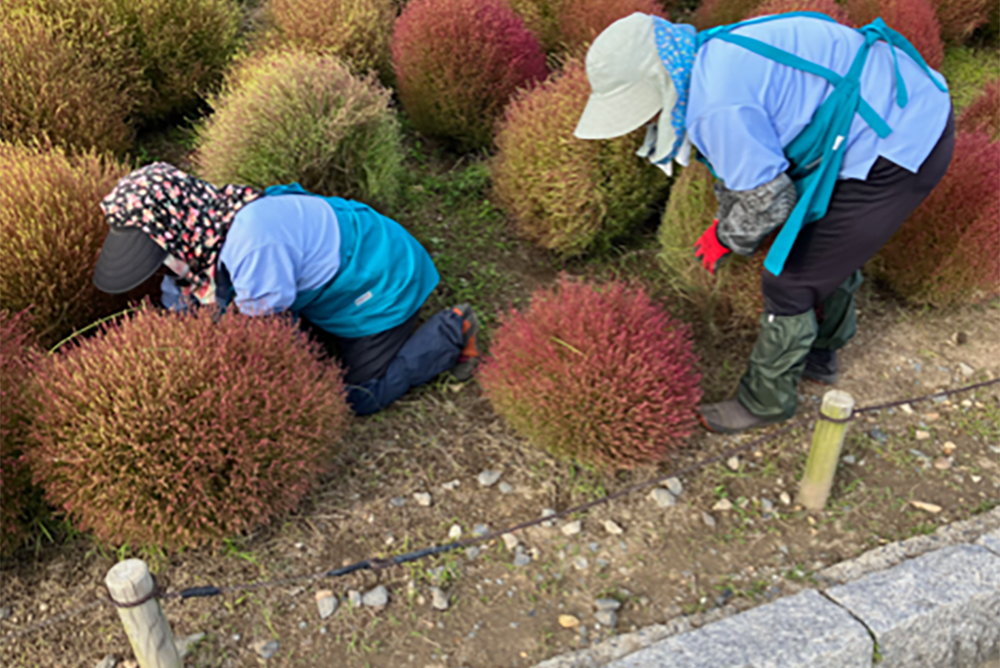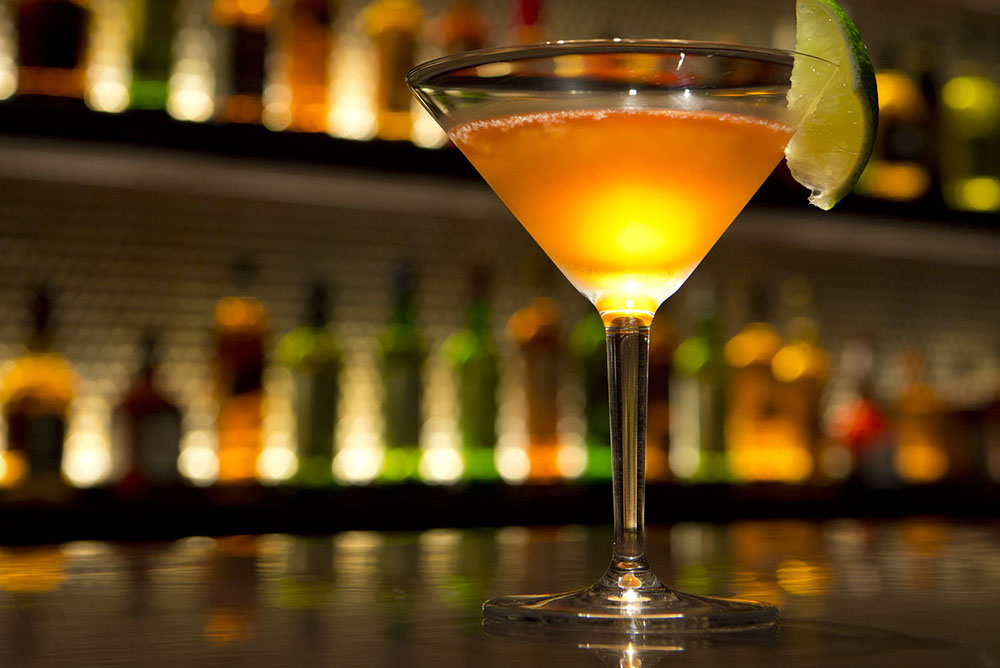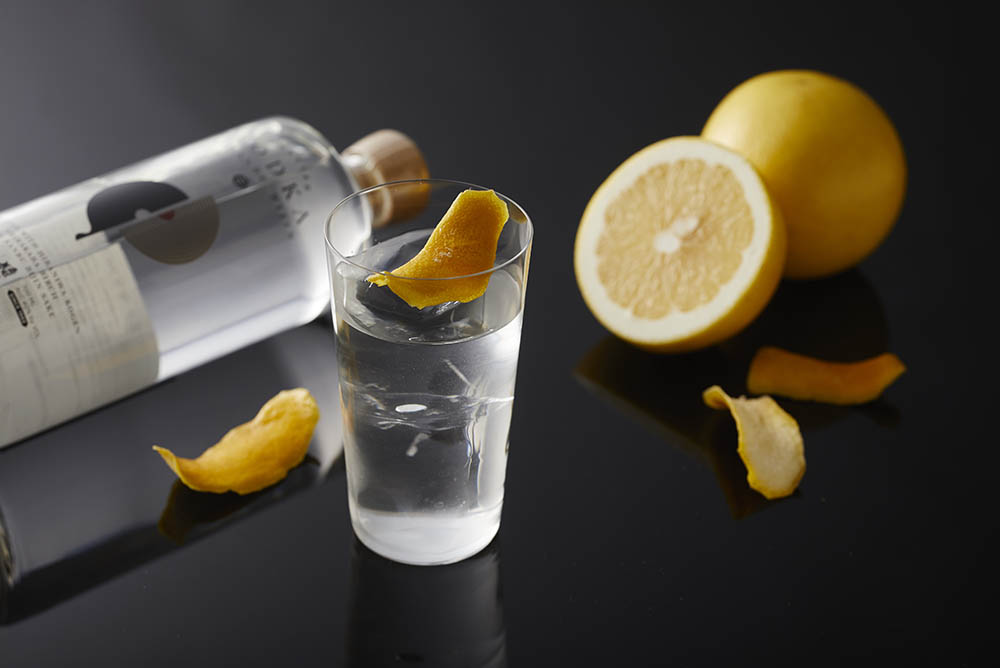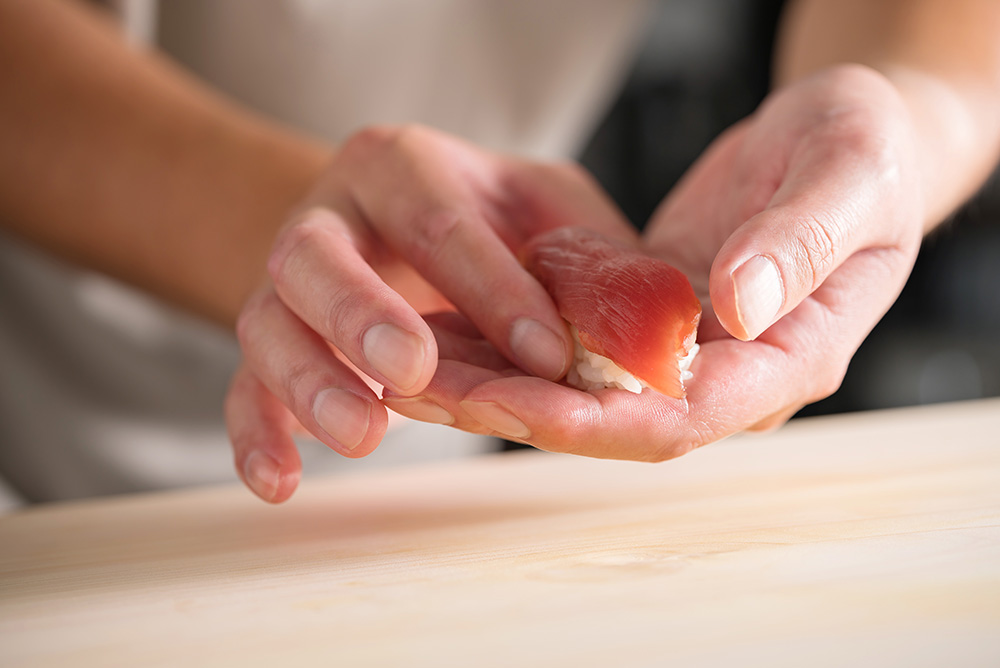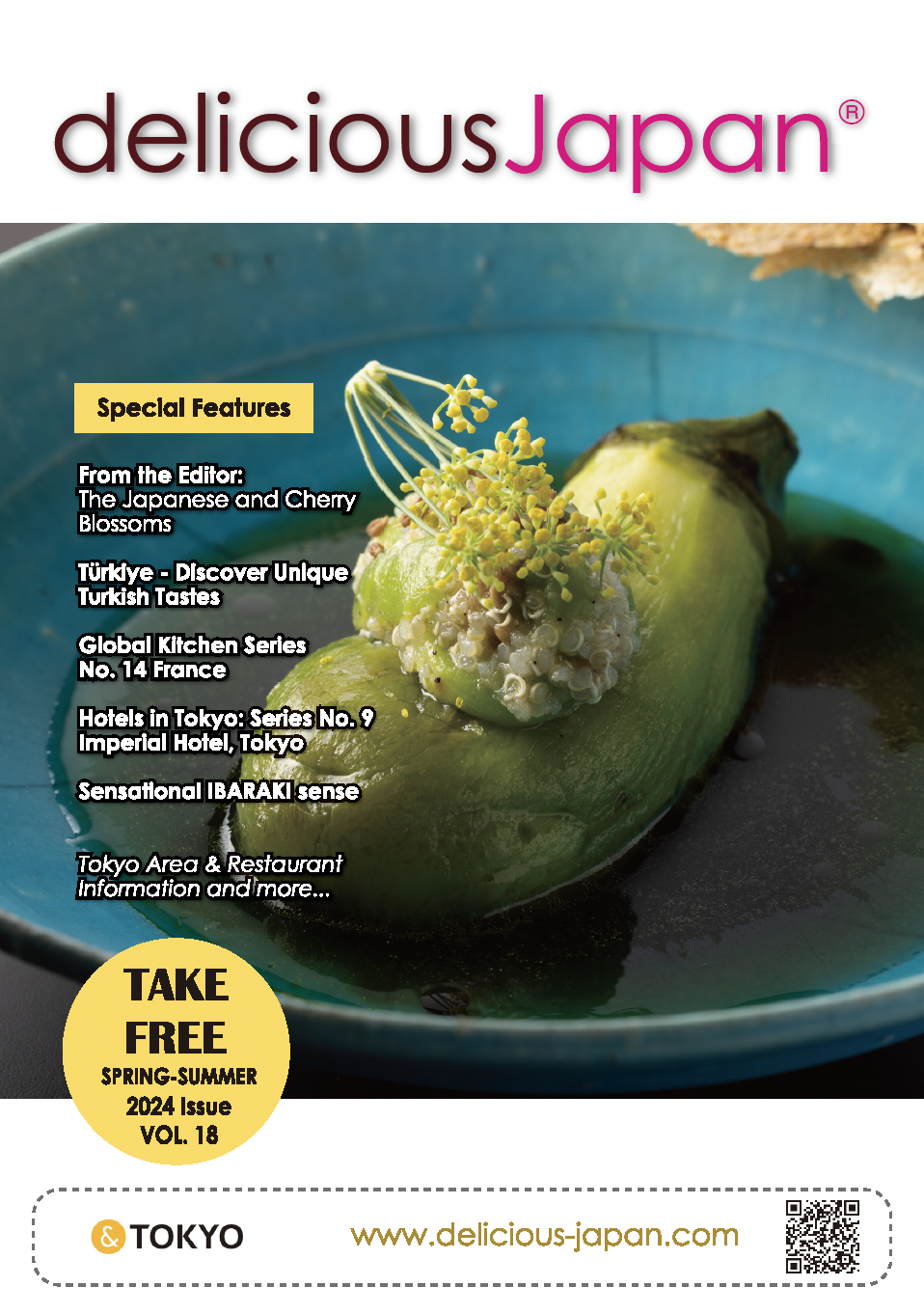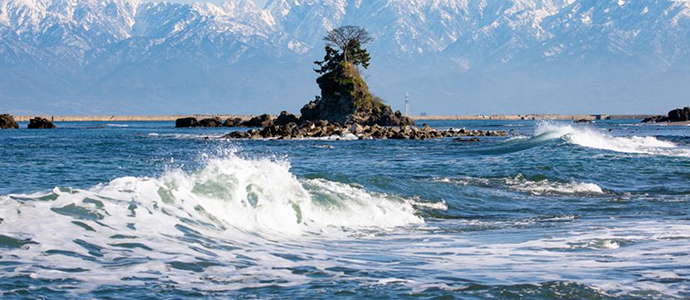
Explore the Charms of Toyama
Toyama Prefecture has a population of 1 million. Located in the center of the Japanese archipelago in the north-central part of Honshu, Toyama Prefecture has a long history of active exchange with countries on opposite shores, as the central hub of the rim of the Sea of Japan. Toyama is blessed with a magnificent natural environment and various tourism resources, including food culture and traditional performing arts. It is also a manufacturing prefecture attracting attention from overseas for its excellent industrial base, including its industrial concentrations. For this special interview, we had the opportunity to speak with Vice Governor Mika Yokota, who boldly communicates Toyama's "charms" domestically and internationally and is at the helm of Toyama's administration.
Mika YOKOTA
Vice Governor of Toyama Prefectural Government
The Vice Governors assist the Governor. In Toyama Prefecture, there are two Vice Governors who split responsibility for departments, but they give their opinions on administration as a whole, even outside their direct departmental responsibilities. I hope to assist from the governor's perspective. For projects that cross departmental boundaries or require coordination with outside parties, I try to provide direction and lead by myself. I am willing to do whatever it takes to keep the prefectural government as a whole moving forward with policy and running well.
I understand that you are from Hiroshima. What do you see as the charms of Toyama?Hiroshima also offers beautiful scenery of the Seto Inland Sea and the Atomic Bomb Dome, among other attractions. I have been to many places in Japan, but the charm of Toyama Prefecture is, above all, the view of the Tateyama mountain range and Toyama Bay at the same time, which is unrivaled in the world. Another aspect is that there is plenty of rain and snow, with rivers and over 11,000 kilometers of irrigation channels for agriculture keeping every inch of the land moist with melting snow. That abundance makes the entire landscape rich. In addition, the 4,000-meter elevation difference provides a wealth of high quality food, especially rice and fisheries products, as well as vegetables and livestock products.
In terms of culture, there is the Manyo Period (8th century), Shoukouji Temple that was built up from the Heian Era to the 15th century, Zuiryuji Temple (the family temple of the second lord of the Kaga Domain) from the Edo Period, and traditional crafts such as copperware and sculptures from around that period, which have been handed down to the present. Living in such a land is something special. The charm of Toyama lies in its mountains and bays, water, culture, and food, and I think those are all of special quality too.
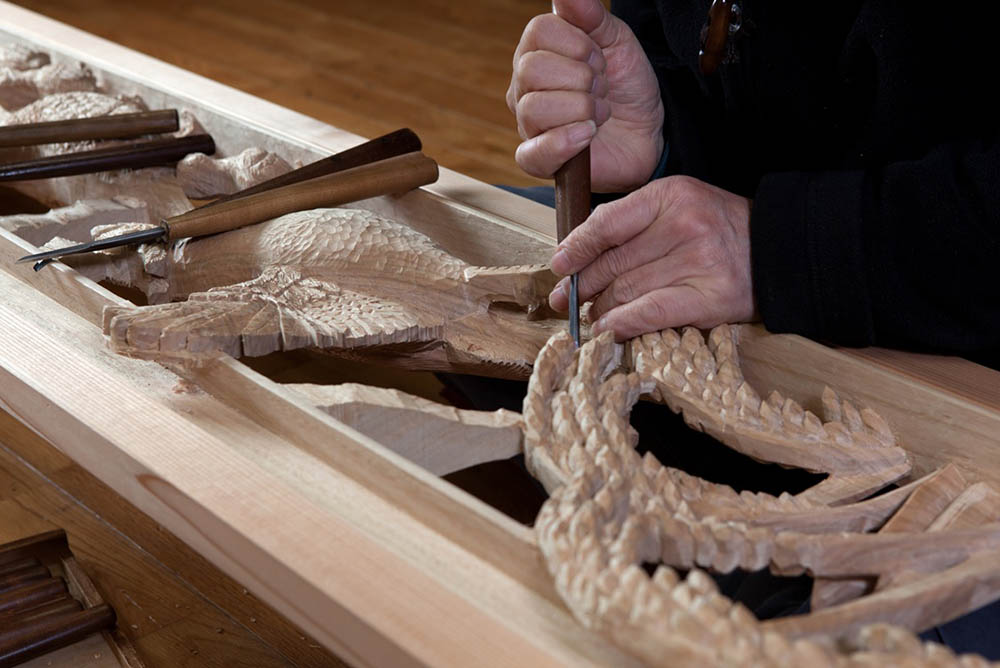
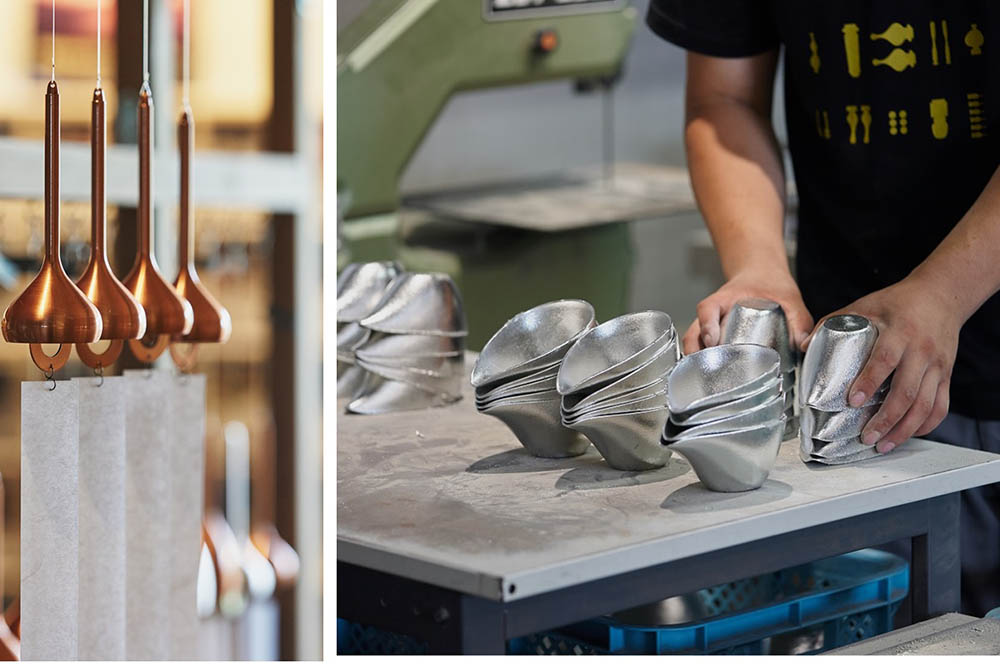
What kind of Toyama experiences would you like foreign visitors to Japan to have?
The first is the view over the sea from the Amaharashi Coast to the Tateyama mountain range and the scattered villages of the area. The Tateyama mountain range itself is easily accessible. The Tateyama Alpine Route is the way to experience the mountains. It's a world-class sightseeing route that traverses cable cars, ropeways, and other vehicles. The alpine area is blessed with a beautiful and magnificent natural environment, including "Yuki-no-Otani," between walls of snow nearly 20 meters high.
In terms of culinary attractions, we hope you will enjoy fresh seafood such as white shrimp, firefly squid, and yellowtail, as well as Toyama Bay sushi and Japanese sake. We hope that you will stay in Toyama for a long time and come back again and again, to travel as if you were living here.
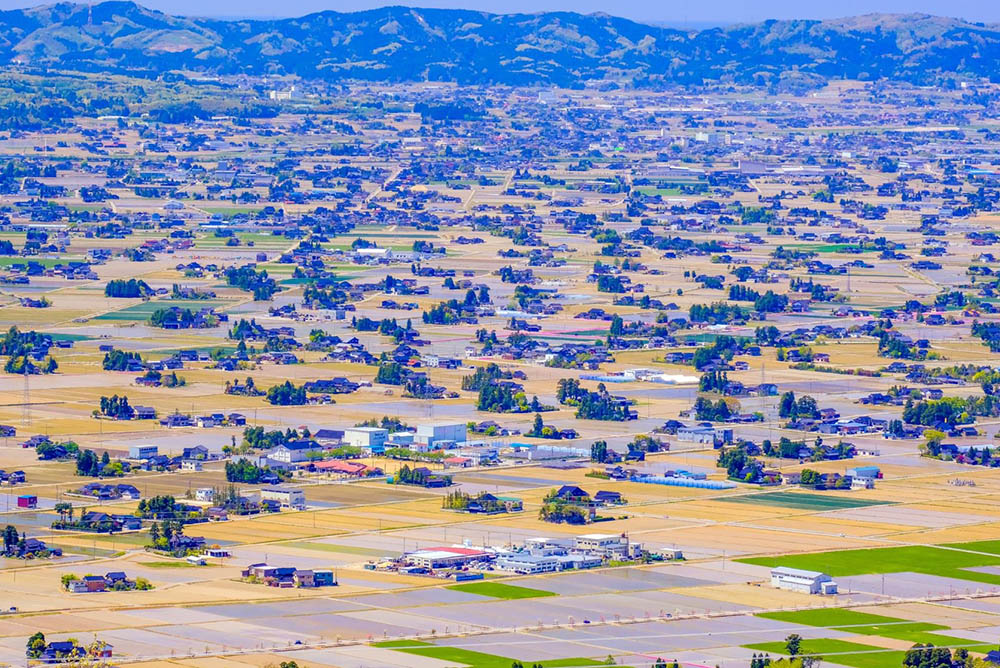
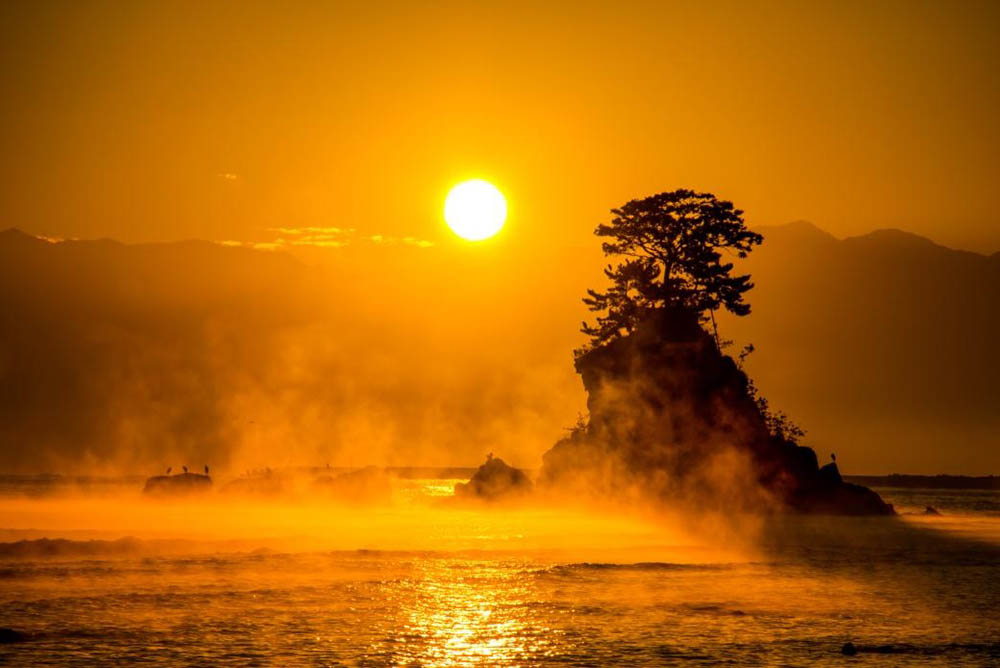
What are your initiatives and challenges in the area of tourism promotion?
We are working on promotions to attract repeat visitors from Taiwan, which had the largest number of visitors by country before the pandemic, and from Southeast Asia, which has been on the rise. Of course, we would like to see people from North America, Europe, and Australia as well. Since last year, we have been promoting in the U.K. and have sensed a strong interest in traditional crafts such as orin (Japanese bell) and wagashi (Japanese confectionery).
We are working to improve the environment for welcoming individual foreign tourists by actively disseminating information on our official tourism website, developing human resources through the Toyama Tourism School, improving the quality of accommodation, and providing support for foreign language signage.
We would like to polish and update our tourism resources to provide a high-quality experience. Over the next several years, we will continue working to attract high-added-value travelers to the Hokuriku area.
From the end of October into November last year, we visited London, England and Dublin, Ireland for about a week to promote tourism and export of prefectural products.
In London, the promotion was called "Toyama Week in London 2023." We staged seminar-type business meetings and invited local travel agencies and media, tourism PR seminars for the general public, pairing dinners where Toyama's local sake and food were served together, and more. In addition, we brought in Yasuhiro Hikiami of Hikiami Kogetsudo, a Japanese confectionary artisan, to conduct sales demonstrations and hands-on workshops on Japanese confectionary making at Japan House London and local commercial facilities.
In Dublin, we also held an event at the Ambassador's residence, using Toyama's food as a starting point. Specifically, Takahiro Shimojo, an up-and-coming owner-chef in Toyama City, joined us for a sushi nigiri (sushi assembly) demonstration and to promote traditional crafts along with the prefecture's sake and whiskey.
Local elementary school students were also invited to try their hand at making temarizushi using Fufufu rice, the most popular rice in Toyama Prefecture, and they experienced the possibilities of international exchange.
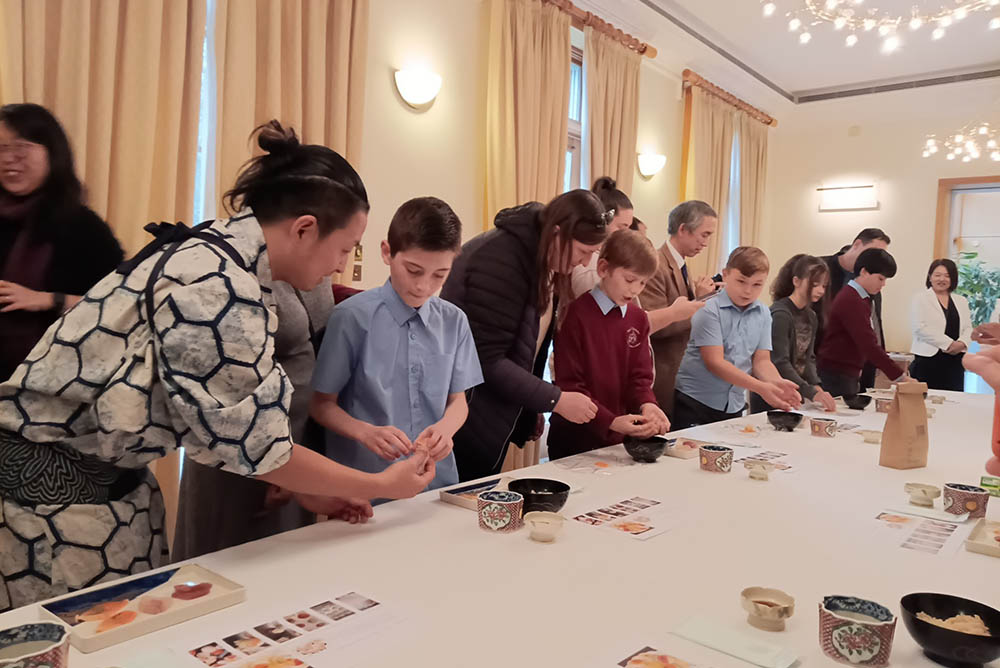
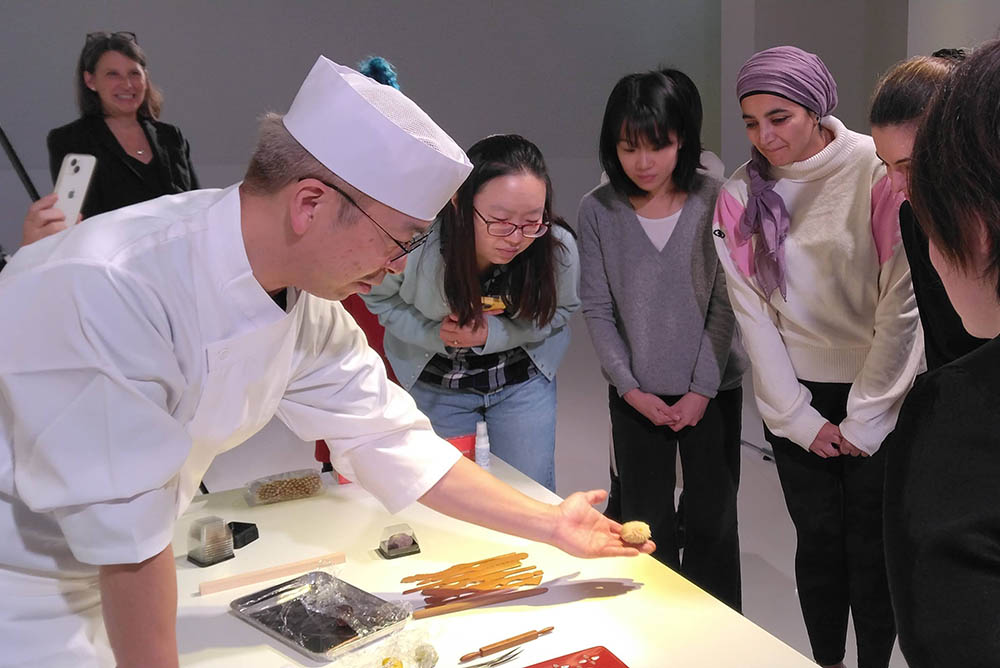
What was the reaction and response from the local people?
In addition to travel agencies and the media, the response from the general public was very positive, with many people saying they would love to visit Toyama and would like us to send them there. Upon their return to Japan, a succession of participants in the London event, including Francisco Gien (media person and curator of the London Design Festa), Ross Shonhan (owner and chef in Japanese cuisine), Iris Law (model and actor), and several travel agencies came to the prefecture. In addition, a well-known female influencer living in London has stayed in the prefecture for a series of nights and has been sharing the charms of Toyama Prefecture on social media sites, showing the effectiveness of the program.
In the future, we would like to further promote the development of businesses in the prefecture that can accommodate foreign visitors, enhance the experience-based content of traveling as if you were living in the prefecture, and improve accommodation facilities.
Toyama Prefecture is the foremost manufacturing prefecture on the Sea of Japan side of the country. It has a high ratio of manufacturing industries, including chemical industries, such as the pharmaceutical industry with a history of over 300 years, and non-ferrous metals such as aluminum, which are backed by abundant water resources and low-cost electricity. Secondary industries employ 33.2% of Toyama's working population, compared to the national average of 23.4%. The value added per capita is 1.35 million yen, well above the national average of 790,000 yen. In addition to the concentration of industries in the materials sector, such as metal and plastic product manufacturing, there are many companies with unique technologies and skills in the production machinery and equipment manufacturing industry, and in the electronic component, device, and circuit manufacturing industries.
Currently, we need to create new environmental and social values, such as carbon neutrality and the development of a circular economy. The prefecture's manufacturing industry must also actively invest in value creation and realize sustainable growth by spreading the benefits throughout the prefecture as the driving force of the prefecture's economic development. We will consider our future policy in light of the government's GX investment policy moves and the growth of circular economy-related markets.
In order to incorporate the growth energy of overseas countries and regions into the prefecture's economy, the prefecture has been actively promoting economic exchanges with overseas countries and regions in the past. They include (1) memoranda of understanding with Vietnam, Thailand, Hong Kong, and the U.S. state of Oregon, and (2) the dispatch and acceptance of mutual economic delegations (Oregon, Vietnam, etc.).
We have set up overseas business support desks in five international locations (Vietnam (Ho Chi Minh City and Hanoi), Thailand, Taiwan, and Russia) and in Toyama Prefecture (within the Toyama New Industry Organization) to provide consultation services about various overseas businesses for companies in the prefecture. We also support the overseas expansion and sales channel development of companies in the prefecture by providing assistance for participation in overseas trade fairs and holding exhibitions and sales meetings overseas.
The 7th T-Messe Toyama Manufacturing Trade Fair, held in October last year, is the largest international trade fair on the Sea of Japan coast. It showcases Toyama Prefecture's corporate manufacturing technologies and products, both domestically and internationally.
Against the backdrop of the increasingly uncertain global situation, including the Israel-Palestinian situation, as well as the ongoing depreciation of the Yen, the needs of companies in the prefecture for overseas business are becoming increasingly diverse. We will continue our efforts to promote economic exchange between our prefecture and various countries and regions.
Foods include yellowtail, crab, white shrimp, sushi, and genge (Chinese milkvetch). In spring, it's time for firefly squid. Tourism includes Nisseki Temple on Mt. Oiwa, Inami, Gokayama Gassho-Zukuri Village, wineries, and firefly squid sightseeing boats. Tateyama has the Erosion Control Museum, the Tateyama Museum, and Mandala Yuen Garden.
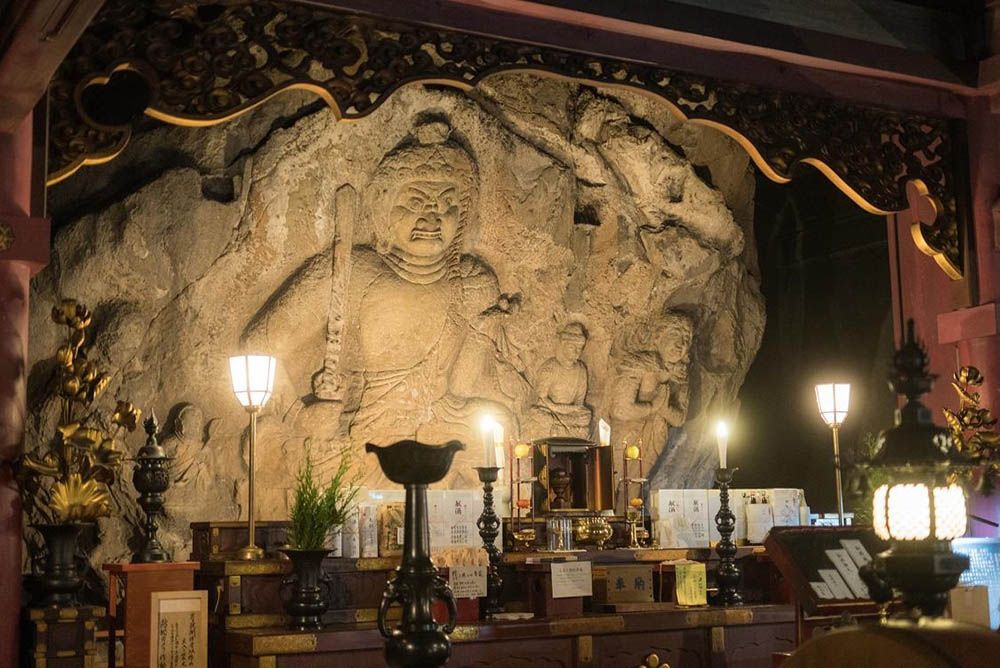
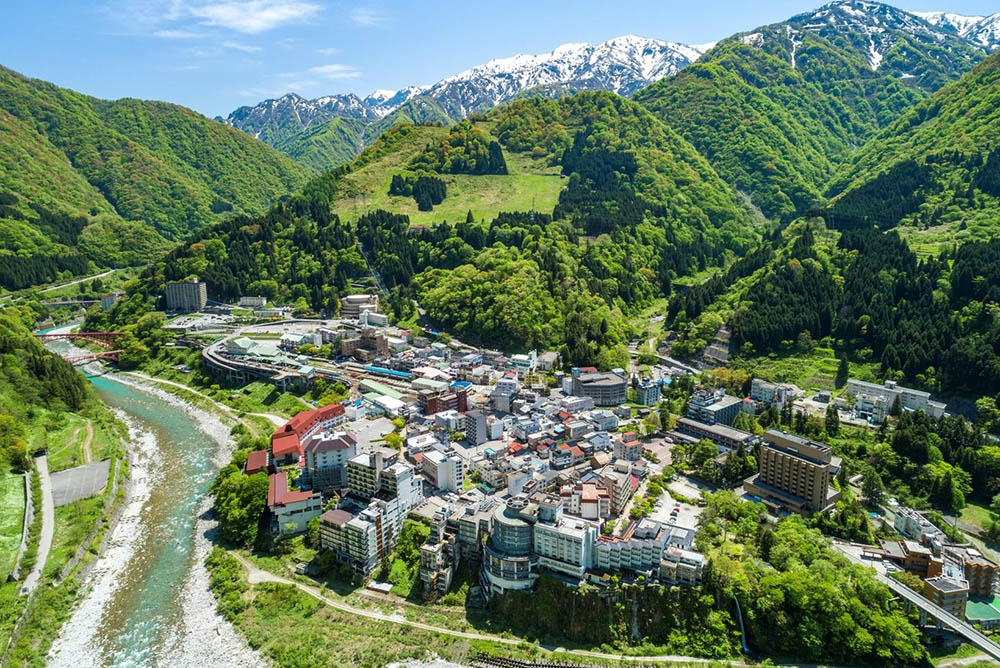
Finally, what is your vision for the future as Deputy Governor?
I believe that relaxing scenery, spectacular views, coziness, and beauty will grow in value, even in a society with a declining population. I want to make this region a place that can offer such value in forms such as great technology, artwork, and tools. I want to make the region more productive, able to deliver the better things to the public, and able to evolve.

